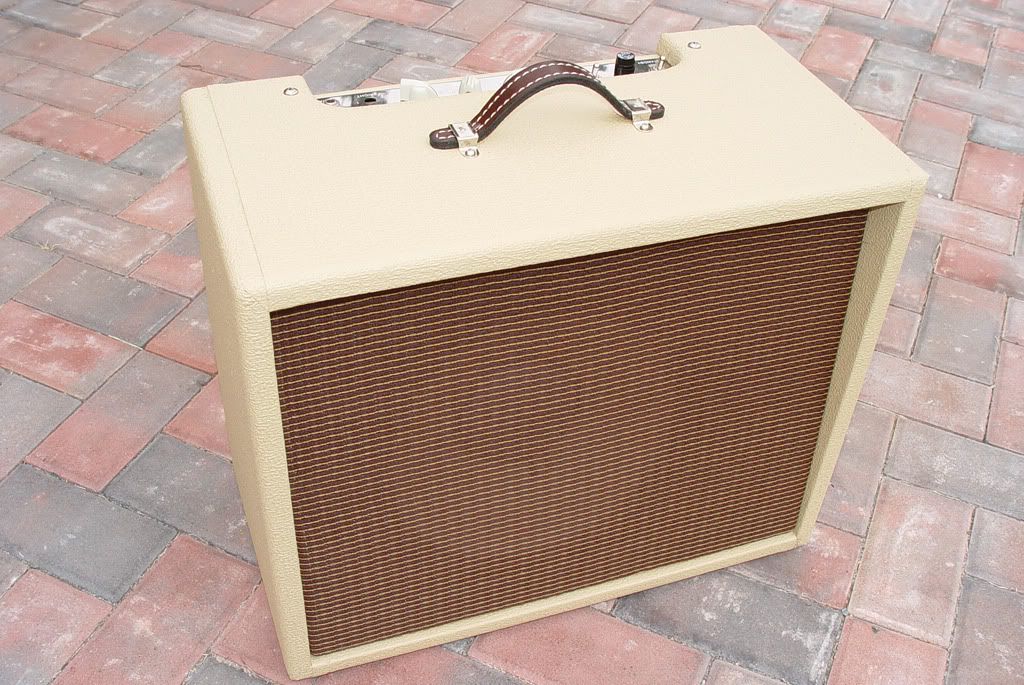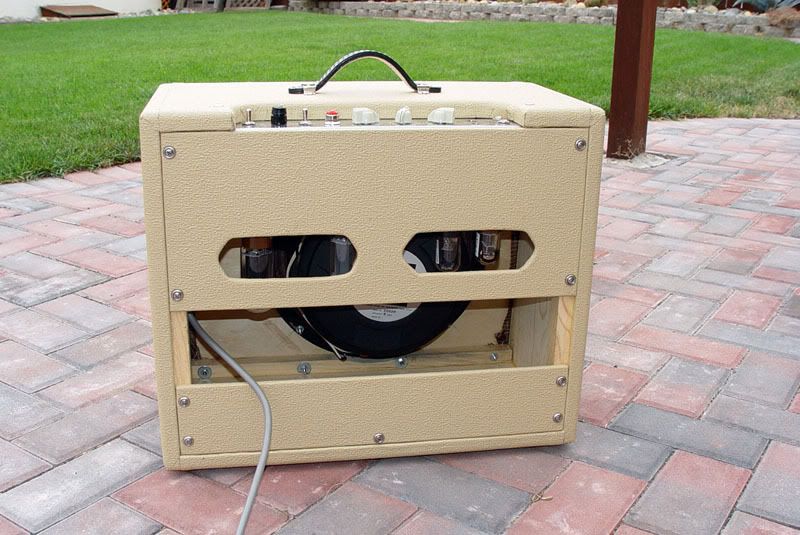Hi every one, I'm new here but have been lurking for some time now.
Lots of great info and knowledgeable people here I have to say!
I'm looking for advise about this amp I've been building and I've been at for awhile because I keep changing it, LOL! I should have put it into a test box platform before putting into a chassis.
It's a tweed deluxe 5C3 chassis from Weber in my self built 12" cabinet.
In the vein of the old Gibson parallel 6v6 amps I built this with el34s, a 6SL7 preamp and all point to point wiring. The plate and cathode resistor values for the 6SL7 I got from the Angela super single ended schematic and the el34 values are fairly generic.
The tone stack is a brown face Fender type and I adjusted the capacitor values to suit my tastes. I've wired in a tone stack by-pass, using a 2p3p switch, that puts it into a tweed style tone set up.
The tone stack really sucks the power but it really screams in tweed mode.
What I'm after here is:
I think that the grid leak resistor for the el34s is incorrect. I got the 470k value by reading over some of the Valve Wizard's web page and that was for a single el34. The Valve Wizard -Single Ended
And look over the schematic. I think I have it correct and any advice is much appreciated! The rest of the hard parts are shown on the schematic.
Down the road I think I'm going to have to add another gain stage and a cathode follower stage to drive the tone stack.
I really like this old Fender stack but it really sucks the gain. When I do this then maybe I can dump the Tweed switch.
Thanks for any help and mucho appreciated.
I put the schematic on a link because it's big, so old people like me can see it! http://i76.photobucket.com/albums/j7...one6-06-10.jpg
http://i76.photobucket.com/albums/j7...one6-06-10.jpg
Scott




Lots of great info and knowledgeable people here I have to say!
I'm looking for advise about this amp I've been building and I've been at for awhile because I keep changing it, LOL! I should have put it into a test box platform before putting into a chassis.
It's a tweed deluxe 5C3 chassis from Weber in my self built 12" cabinet.
In the vein of the old Gibson parallel 6v6 amps I built this with el34s, a 6SL7 preamp and all point to point wiring. The plate and cathode resistor values for the 6SL7 I got from the Angela super single ended schematic and the el34 values are fairly generic.
The tone stack is a brown face Fender type and I adjusted the capacitor values to suit my tastes. I've wired in a tone stack by-pass, using a 2p3p switch, that puts it into a tweed style tone set up.
The tone stack really sucks the power but it really screams in tweed mode.
What I'm after here is:
I think that the grid leak resistor for the el34s is incorrect. I got the 470k value by reading over some of the Valve Wizard's web page and that was for a single el34. The Valve Wizard -Single Ended
And look over the schematic. I think I have it correct and any advice is much appreciated! The rest of the hard parts are shown on the schematic.
Down the road I think I'm going to have to add another gain stage and a cathode follower stage to drive the tone stack.
I really like this old Fender stack but it really sucks the gain. When I do this then maybe I can dump the Tweed switch.
Thanks for any help and mucho appreciated.
I put the schematic on a link because it's big, so old people like me can see it!
 http://i76.photobucket.com/albums/j7...one6-06-10.jpg
http://i76.photobucket.com/albums/j7...one6-06-10.jpgScott






Comment